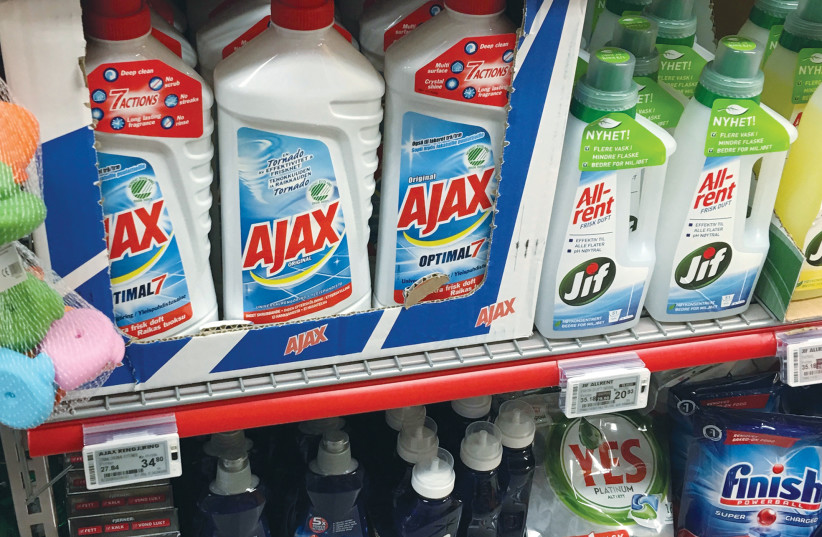Cleanliness, goes the old saying, is next to godliness; maybe so when referring to clean hands and honesty. But when it involves the use of household cleaning products, it’s worrisome. A peer-reviewed study by Environmental Working Group (EWG) scientists in Washington, has analyzed 30 cleaning products including glass, carpet, and bathroom cleaners; multipurpose sprays; air fresheners; stain removers; and more, and found that everyday products may release hundreds of hazardous volatile organic compounds (VOCs).
Dr. Alexis Temkin, a senior EWG toxicologist published his findings in the Elsevier journal Chemosphere under the title “Volatile organic compounds emitted by conventional and even 'green' cleaning products on the US market.”
The researchers tested both conventional products and “green” cleaning products and detected a total of 530 unique VOCs in the 30 products. Of these, 193 VOCs were hazardous – identified as having the potential to cause health harms such as respiratory system damage, increased cancer risk, and developmental and reproductive impacts.
How do cleaning products pollute the environment?
VOCs in cleaning products affect the quality of air both indoors and outdoors, but they contaminate indoor air two to five times more than outdoor air, with some estimates putting it as high as 10 times more. Some products emit VOCs for days, weeks, or even months, they wrote.
“This study is a wake-up call for consumers, researchers and regulators to be more aware of the potential risks associated with the numerous chemicals entering our indoor air,” said Temkin.

“Our findings emphasize a way to reduce exposure to hazardous VOCs – by selecting products that are ‘green,’ especially those that are ‘green’ and ‘fragrance free,’” she said. The study concluded that products labeled “green” emitted fewer VOCs, compared to conventional products – about half the number, on average. The green products categorized as “fragrance free” also produced the fewest VOC emissions – nearly eight times fewer than conventional and four times fewer than green products that included fragrance on their label.
So must one clean one’s home just with vinegar, steam or baking soda? The “green” products sold in supermarkets are less harmful, the researchers reported. One emitted just four chemicals classified as hazardous, on average, compared to about 15 in green products with fragrance and 22 for conventional products.
This suggests that choosing green, or green and fragrance free, cleaning products could be wise for consumers concerned about indoor air quality and potential health risks. VOCs’ health harms are especially worrisome because of how many people around the world may be exposed to them in the workplace.
Research shows people working in the cleaning industry have a 50% higher risk of developing asthma and a 43% higher risk of chronic obstructive pulmonary disease. Women working in this field also face an increased risk of lung cancer.
Children’s health may also be at risk. Some studies show that higher use of certain indoor cleaners in utero and in infancy is associated with a greater risk of asthma and wheezing in childhood. “These cleaning products may hurt our health, but they may also harm the environment,” said Samara Geller, EWG senior director of cleaning science.
The study’s results carry implications not only for human health but also for environmental health. VOCs emitted by consumer products can contribute to outdoor air pollution, adding to existing environmental concerns. A 2018 study estimated that half of the VOCs responsible for air pollution come from consumer products.
“Going green with your cleaning products is an easy way to reduce exposure to harmful chemicals. This may be especially important for women’s and children's health,” said Geller.
EWG identifies itself as a nonprofit, non-partisan organization that “empowers people to live healthier lives in a healthier environment. Through research, advocacy and unique education tools, EWG drives consumer choice and civic action.” Established two decades ago by Ken Cook and Richard Wiles, it has been criticized for exaggerating the risks of chemicals by some groups, but the current research has been published in a respected, peer-reviewed journal.
